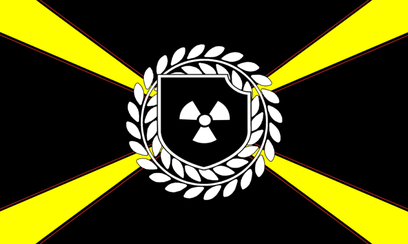Atomwaffen Division flag.png

Part 1 of 2 Parts
On January 6th of 2021, thousands of followers of Donald Trump stormed the U.S. capitol in an unprecedented display of right-wing white supremacist fury. Fortunately, only a few people were killed though many were injured. The nation was horrified but it could have been much worse. Some of the rioters had brought home-made bombs and incendiary devices with them that could have killed and injured hundreds including members of Congress. In a worst-case scenario, there could have been an act of nuclear terrorism.
I have posted about the dangers of nuclear terrorism before. There is a broad international law enforcement project to prevent the sale, transport and use of nuclear materials by terrorists. While the fear of nuclear terrorism by foreign parties is very real, the equally real possibility of domestic nuclear terrorism exists but has not received much press. The idea of nuclear and radiological terrorism has been a part of white-supremacist ideology for decades.
Unfortunately, the U.S. policy community seems to believe that the threat of nuclear terrorism is a mostly external threat. Such Islamist terrorism networks as the Islamist State, Al-Qaeda and their splinter groups have attempted to obtain nuclear materials on the black market. But U.S. far-right extremist groups also have history of attempting to secure nuclear weapons and radiological materials for use in terrorist attacks against the U.S. federal government. Members of neo-Nazi groups such as the Atomwaffen Division (which means “atomic weapons” in German), also known as the National Socialist Order, is documented to have tried to get nuclear materials in the past in order to stage terrorist attacks.
U.S. policy makers as far back the 1970s have been concerned about international terrorism because of the increase activities of armed insurgent groups in the Middle East. In 1972, the Palestinian terrorist group called Black September killed eleven Israeli Olympic team members. The spike in oil prices in 1973 brought a great deal of money to petroleum exporting countries in the Middle East and raised fears of a violent, non-white, Muslim world. In 1974, India detonated its first nuclear bomb. This led Pakistan to develop its own nuclear weapons with the help of Iran, Libya and other M.E. nations hostile to the West. These developments caused Western policy makers to fear that nuclear materials could fall into the hands of nations and non-state actors with hostile intentions toward Western nations including the U.S. In 1979, a new Islamist government in Iran took hostages from the U.S. embassy and the ensuing drama spent more than a year on U.S. television. The events of the decade of the 70 solidified U.S. fears of radical Islam as a serious threat to U.S. national security.
During the decades of the 70s, nuclear terrorism was also a domestic threat. Nuclear power grew explosively in that decade and it was feared that a large amount of plutonium would be widely available on the black market. By 1980, white-power advocates had organized for a violent armed struggle of “leaderless resistance” to the U.S. federal government. Many of those involved were returning Vietnam war veterans hardened by military training. To them, the federal government was the source of unacceptable societal change that threatened White Christian Americans.
Please read Part 2 next